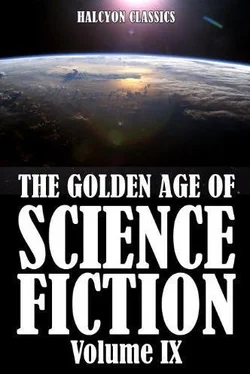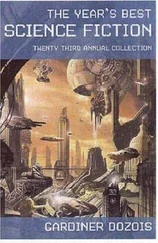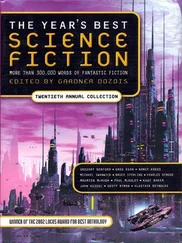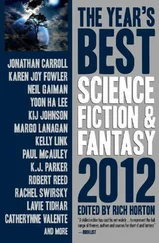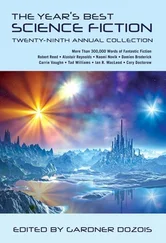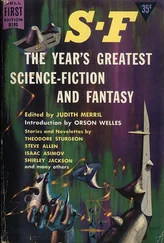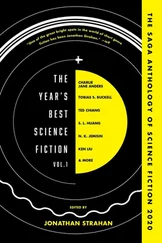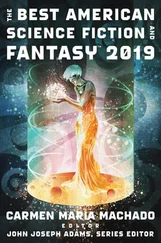“It had long been reasoned that, as the earth was accompanied by a moon, and Jupiter had at least four, Mars, the intermediate planet, might be expected to possess a satellite. [5] Most probably the larger planets possess satellites which have yet to be discovered.
The planet itself being small, its moon would probably be very small, and likely to be overlooked when observing with the telescope, because its light would be overpowered by the light of the planet, which would make the telescopic field of view very bright. Up to the year 1877 the most powerful instruments had been used without success in the search for the supposed satellite.
“In that year Mars made an exceptionally near approach to the earth, and Professor Asaph Hall, of Washington Observatory, took up the search, using a splendid refracting telescope having an object-glass 26 inches in diameter. The methods he adopted were rewarded with success, for he discovered not only one, but two satellites of Mars, and they were given the names of Phobos and Deimos.
“Both these satellites are very close to the planet and extremely small, Phobos being less than 4000 miles from the planet’s surface, and Deimos only 12,300 miles from it. As seen in the telescope, they are very faint points of light which cannot be measured by ordinary means, and the estimation of their size was a matter of great difficulty.
“Professor Langley gives an interesting account of the endeavour to estimate their size by the amount of light reflected, as compared with the light afforded by our own moon when full. It was a most difficult task, as the comparison had to be made by means of tiny holes drilled in metal plates; and for a long time it was impossible to find a workman who could drill a hole sufficiently small for the purpose, although one of those employed had succeeded in drilling a hole through a lady’s thin cambric needle from end to end, thus converting it into a tiny steel tube. One would have thought such a feat impossible; yet what was now required was a hole smaller than the one thus made through the tiny needle.”
“My word!” said M’Allister, “I would like to see the mon who did that piece of work, and shake hands with him; he must be a rare clever fellow!”
“Yes,” said John, “and I would like to see the drill he used; for such a long and extremely slender tool, to be effective, must be as clever a piece of work as the steel tube.”
“I may tell you,” I proceeded, “that success was at last attained; and as a result of the comparison of our moon’s light with that of Deimos, it was shown that if the general surface brightness of the latter were equal to that of our moon, then Deimos must be only 18 miles in diameter, or about a 15,000th part of the area of our moon’s disc.
“To state the matter in another way—supposing our moon were only 18 miles in diameter, and was removed to the same distance as Deimos is from us, then it would appear only the very faint point of light that Deimos appears when viewed through the telescope.
“By the same means Phobos, the satellite nearest to Mars, was estimated to be about 22-1/2 miles in diameter. These dimensions, however, depend on the brightness of these satellites being exactly the same as the general brightness of our moon; and later experiments have fixed the sizes as 36 miles for Phobos, and 10 miles as the diameter of Deimos.
“I will not detain you much longer on this subject, as we shall be able to discuss it further when we arrive upon Mars; but I may now mention that, in one respect, the little satellite named Phobos is unique. It is the only satellite we know of which revolves round its primary planet in less time than it takes the planet itself to make one revolution on its axis. [6] This is the case as regards separate satellites; but it may be pointed out that a similar thing must occur in regard to the rings of Saturn. The rings are composed of swarms of satellites so small that they can only be termed particles, and these particles at the inner edge of the “crape ring” revolve round Saturn in 5 hours and 33 minutes, the inner edge of the ring being only about 47,000 miles from the centre of the planet. The planet itself revolves on its axis in 10-1/4 hours. Thus, an immense number of these minute satellites must revolve round the planet in less time than it takes the planet to make one rotation. It is calculated that the particles in the outer edge of the next ring complete one revolution round the planet in 14 hours and 28 seconds.
“Mars revolves on its axis in 24 hours, 37 minutes, and 22 seconds, thus the ‘day’ on Mars is nearly 38 minutes longer than our ‘day.’ Phobos revolves round the planet in the very short period of 7 hours, 39 minutes, and 14 seconds, and therefore makes more than three complete revolutions round the planet in the course of a single Martian day. The peculiar phenomena to which this very rapid motion gives rise, and the numerous eclipses which occur, will be matters of great interest to us all when we reach Mars. Our moon, as you know, takes a month to make one revolution round the earth.”
“Professor,” said John, “when we get to Mars, it will be rather a curious experience for us to see two moons shining in the sky at the same time!”
“My word!” exclaimed M’Allister, “two moons shining at once! If I go out and see such a sight as that, I shall think the whisky has been a wee bit too strong for me!”
“Well,” replied John, “if your usual drink has the effect of making you see double, take good advice, and leave the whisky severely alone when you are on Mars, or else you will be seeing four moons all at once, and receive such a shock that you will never get over it!”
M’Allister laughed pleasantly as John said this. He is a real good fellow, and takes all John’s chaff with the utmost good-humour; but, in justice to him, I must say that, although he sticks to his national drink like a true Scot, I have never once seen him any the worse for it. He knows his limitations, and always keeps within them.
CHAPTER X
THE DISCOVERY OF LINES UPON MARS—THE GREAT MARTIAN CONTROVERSY
After the little interlude with M’Allister, I resumed my remarks by saying that “The year 1877, so memorable for the near approach of Mars and the discovery of its two tiny satellites, was also the year in which a still more important discovery was made—a discovery, in fact, which has much enlarged our knowledge of the planet, and has also resulted in an entire revision of our conceptions respecting it.
“An Italian astronomer, Signor Schiaparelli, took advantage of the favourable position of Mars to observe it very carefully, and some time afterwards announced that he had seen upon its surface a number of very fine lines which had not previously been noticed, and these he had carefully charted upon his drawings and maps.
“This announcement started one of the most acrimonious discussions that the astronomical world has ever known; and although it is now over thirty years since it commenced, astronomers are still divided into two parties—one accepting the lines as demonstrated facts, the other either denying their existence, or endeavouring to explain them away by various more or less ingenious or fanciful theories.
[Illustration: From a Globe made by M. Wicks Plate VIII
MARS. MAP I
In all these maps the south is at the top. The dark shaded portions are vegetation, mostly on old sea-beds. The fine lines are the canals, and the round dots the oases. The light areas are deserts. Longitude “0” is seen on the Equator between the two forks of the “Sabaeus Sinus.”]
“When Signor Schiaparelli’s statements and drawings were first discussed, it was declared by some to be quite impossible that these fine lines could really have been seen by him: either his eyes must have been overstrained, or he claimed to see more than he actually did see. So warm did the discussion become that he soon withdrew from it altogether, but devoted himself to his work. As time went on, he not only verified his previous discoveries, but found numerous fresh lines, all of which appeared to run straight and true over many hundreds of miles on the planet.
Читать дальше
